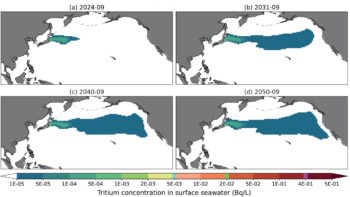James Dacey reviews How To Read Water: Clues and Patterns from Puddles to the Sea by Tristan Gooley

“A buoy is as good as a barnacle,” declares Tristan Gooley in the introduction to his new book How To Read Water: Clues and Patterns from Puddles to the Sea. Gooley, who describes himself as a natural navigator, invites readers to discover a newfound sense of awe for liquid H2O by observing its interaction with the natural and man-made world. The result is a hybrid between a classic popular-science book and a practical guide to interpreting signs in nature that could aid anyone from the serious marine navigator to the casual Sunday stroller.
Gooley integrates personal anecdotes with scientific explanations and historic tales – many around natural navigation techniques of indigenous groups. For instance, we hear about the Pacific islanders who can accurately locate their whereabouts by reading ripple patterns in the sea. When waves refract around land masses, they generate ripple shadows and interference patterns, with each island creating its own unique “ripple map”. Always on the lookout to relate phenomena to everyday scenarios, Gooley invites us to witness the exact same process occurring around a stepping stone in a garden pond.
Throughout the book Gooley frequently refers to physics and what physicists have to say on the issues, covering topics such as capillary action, eddy currents and rogue waves. But he deliberately eschews mathematical formulae in favour of descriptions, and the 20 chapters are rich in arcane language. By the end of the section on rivers and streams, you’ll know your “riffles” from your “glides” and your “pillows” from your “holes”. There’s a nostalgic pleasure in reading about geography school-textbook classics such as river thalweg and oxbow lakes, though some readers may find such well-trodden subjects to be a bit, ahem, meandering.
But it would be unfair to criticize the book for a lack of cutting-edge research; that is not Gooley’s aim. This is unashamedly an expertly curated collection of knowledge passed down over the ages. Gooley makes an impassioned argument that understanding natural patterns in nature only serves to enhance their magical qualities. With this book in your pocket and your smartphone left at home, your next amble around the local fishing lake will be overflowing with watery wonder.
- 2017 Sceptre 376pp £9.99pb



